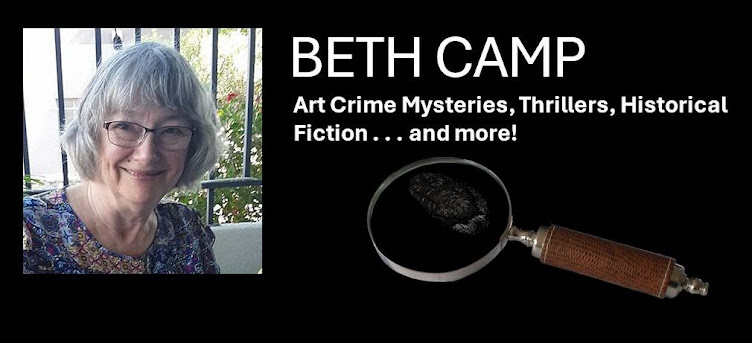Today's post presents an exercise that brings you closer to understanding how 'unconscious' writing may help your own writing -- even deep revision.
FREE WRITE: IT'S ALL ABOUT YOU! Thinking on paper about what you write, how you write, and why, can help you see new patterns in your writing practice. The goal here is to move us to think outside of an outline, perhaps in a nonlinear way.
So, take a piece of blank paper and fold it into 4. Starting with the first square (doesn't matter which one), label it and then jot down your answers to the questions that follow. When you finish with one category, move on to the next square.
1. WHAT: In this square, jot down your answers to these questions: What are you working on now? Note whether you tend to write plot-driven or character-driven stories. What stage is your current project? Idea + content map? Outline? Drafting? First/second/third draft? Revising? First/second/third round of revision? Beta read? Edit stage? Copyedit? Proofreading?
2. HOW: In the next square, jot down a few comments about how you write. Where do you best write? What time do you write? For how long? How many times a day? a week? And how do you write? pen/paper? Computer? Dictation?
3. WHY: In the next square, draft a statement about why you write. Now answer, 'What pushes you to write THIS story? That is your current work. And, can you identify a theme in your current story? Does this theme reappear in any of your other writing?
4. WHAT IF? (Set this aside until AFTER you've reviewed the following:
DEEP REVISION may require you to let go of the 'normal' way you analyze your writing. Our GOAL here is to identify how different levels in your writing connect with each other and reflect each other. All writers, whether we acknowledge it or not, tend to write on several levels. The deeper we go, the less we may 'know' exactly what we're doing. So, how do we encourage that 'unconscious' part of our mind when we write?
And why should we?
In PRE-WRITING, writing faster than we think possible can lead us to get unexpectedly new ideas down on paper. Some writing challenges -- like National Novel Writing Month (NaNoWriMo) which asks us to write 1,667 new words a day, every day for the month of November -- can spur some writers to amazing productivity -- and break through writer's block.
At the DRAFTING stage, consider how some writers sprint. These writers write as fast as they can, without an outline, without revision, with little more than a germ of a concept or storyline. Some writers write from outlines, and some are so reflective, they meditate for a time before getting each sentence down on paper.
If we compare DRAFTING with REVISION, drafting fast can draw from your unconscious mind, while revision, a more analytical process, involves more of your conscious mind. Please note, I'm not talking about the right-brain/left-brain dichotomy here. I believe we all have fully functional (most of the time) right (rational) and left (intuitive) brains at work, depending on the situation and what we ask of ourselves.
What activities could help me tap into my 'unconscious' mind for writing?
- Slow, calm, repetitive activities like walking, driving, showering, or even folding laundry can lead to unexpected insights or ideas that feed right back into your writing.
- Meditating with a goal for short periods can leave you refreshed and with new ideas. Start such a session with a few moments of reflection. Ask "What do I want to achieve?" and then simply let go with slow breathing for about 10 minutes.
- Thought-dumping allows you to write fast without editing. Be inspired by Julia Cameron's Morning Pages (write 3 pages each morning without stopping), or Natalie Goldberg's timed writing exercises at any time of the day. Key to both: Simply write without going back and without making any changes.
- Right before going to sleep, ask yourself a question about your story or think about a specific aspect of the story you've been working on. Or, as Thomas Edison put it, "Never go to sleep without a request to your subconscious." Since I typically write first thing in the morning, practically leaping out of bed to take advantage of that quiet hour, I've happily used this particular tip many times, without realizing others also try this.
After the workshop, one writer came up to me to say, "Here's a tip to tap your unconscious that I bet you've never heard of. Read tarot cards for your character or ask a story-related question." I celebrated the moment with her, for I've done this one too, with quite interesting results, again without realizing other writers would find this a useful or interesting exercise.
Now, pick up that piece of paper that's been divided into four squares. Go to #4 WHAT IF? Which of the above suggested activities, from morning pages to thinking-while-sleeping to reading Tarot cards would you be willing to try? Write them down in #4.
Please come back in a few more days to read about one more activity to help you map out your own 'deep revision' with Part 3: Mind Mapping.
Or go back to Part 1: Working out with Deep Revision to see how we got started on this topic.
Let me know in the comments or by e-mail what YOU think and if you've tried any of these tips. Meanwhile, may your writing go well -- on all levels!
 |
| Fall afternoon at Manito Park (October 2017) |



